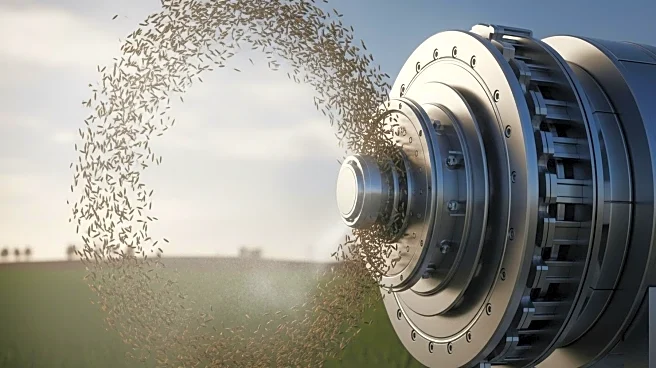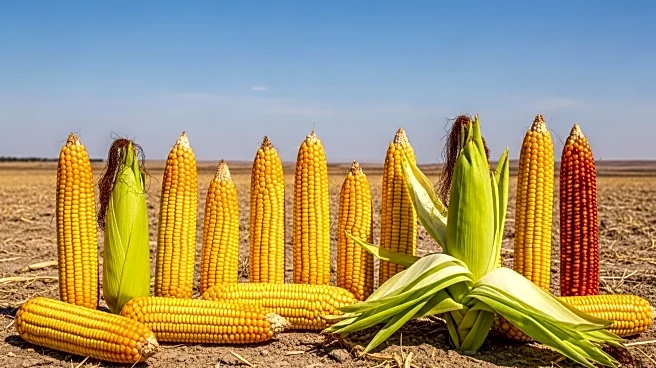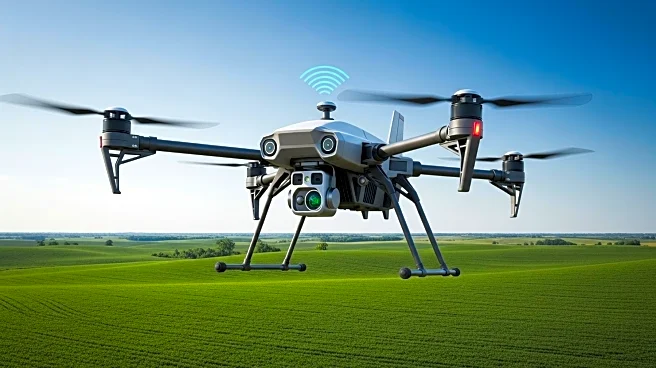What's Happening?
Seed impact mills, a technology first developed in Australia in the early 2000s, are gaining attention in the U.S. as a promising method for controlling herbicide-resistant weeds. These devices are attached to the back of combines and work by mechanically grinding weed seeds, rendering them nonviable. The goal is to reduce the weed seed bank and minimize future weed growth. Companies like Redekop, based in Canada, are leading the charge in North America, although retrofitting existing combines with these mills can be challenging due to the need for specific technical expertise. Studies have shown that seed impact mills can significantly reduce the viability of weed seeds, with research from Iowa State University and Virginia Tech demonstrating reductions in germinable seeds by up to 98% in certain conditions.
Why It's Important?
The rise of herbicide-resistant weeds poses a significant challenge to agricultural productivity and sustainability. Traditional herbicide methods are becoming less effective, leading to increased costs and labor for farmers. Seed impact mills offer an alternative solution that could help manage weed populations more sustainably. By reducing the weed seed bank, these mills can potentially decrease the reliance on chemical herbicides, promoting more environmentally friendly farming practices. This technology could benefit farmers by lowering long-term weed management costs and improving crop yields. However, the initial investment and technical challenges associated with implementing seed impact mills may be a barrier for some farmers.
What's Next?
As seed impact mills gain traction, more farmers may consider adopting this technology, especially those dealing with severe herbicide resistance issues. The agricultural industry might see increased research and development efforts to improve the efficiency and accessibility of these mills. Additionally, there could be a push for training programs to equip technicians with the skills needed to install and maintain these systems. The success of seed impact mills in reducing weed seed banks over time will likely influence their adoption rate and could lead to broader changes in weed management strategies across the U.S.
Beyond the Headlines
The adoption of seed impact mills could have broader implications for agricultural practices and policies. As farmers seek more sustainable weed control methods, there may be increased pressure on policymakers to support research and subsidies for technologies that reduce chemical herbicide use. This shift could also influence consumer perceptions and demand for sustainably produced crops, potentially impacting market dynamics. Furthermore, the environmental benefits of reduced herbicide use could contribute to broader efforts to address climate change and promote biodiversity in agricultural landscapes.











